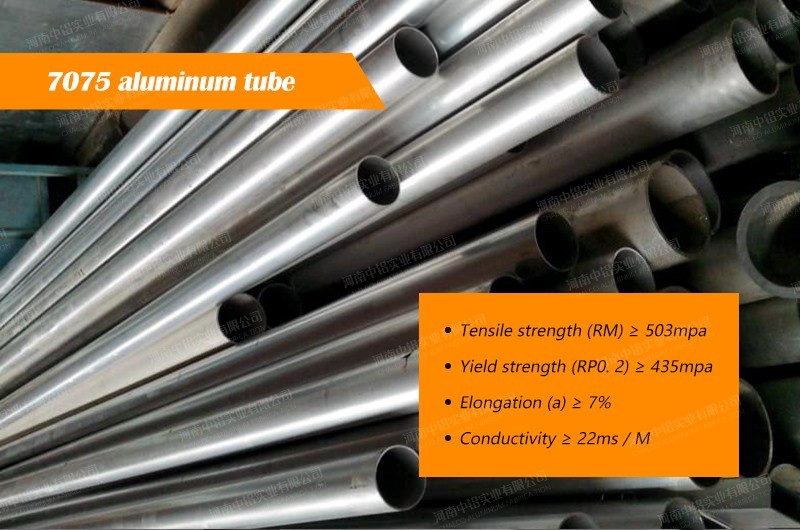Modern aerospace equipment continues to develop in the direction of light weight, long life, and high reliability, and service performance is gradually becoming extreme. Therefore, as the main component of aerospace equipment, the light alloy large-scale integral component must have ultra-high strength and low weight. Aviation aluminum alloy has become a key material for modern aerospace equipment due to its advantages such as high strength, low density, and good formability. The 7075 aluminum tube is an Al-Zn-Mg-Cu series alloy, which is used to manufacture aircraft structures and other high-stress structural parts that require high strength and strong corrosion resistance, such as aircraft upper and lower wing panels, stringers, and bulkheads.

7075 aluminum tube
The 7075 aluminum tube cross-section product is aerospace product, which has higher requirements for the product. This time, 7075 alloy is used for production. The specific development requirements are: tensile strength (Rm) ≥503MPa, yield strength (RP0.2) ≥435MPa, elongation (A) ≥7%; low-magnification structure does not allow cracks, shrinkage tails, pores, and bright grains, Do not allow point-like or needle-like non-metallic inclusions and compounds
Segregation defects; high magnification structure does not allow over-burning; conductivity ≥22MS/m; there should be no exfoliation corrosion of EB ~ ED level.
The section developed this time is 7075 aluminum tube. The aluminum tube has a high degree of alloying and poor metal fluidity, resulting in excessive deformation resistance, difficult to control the extrusion process, low rod temperature, and difficult extrusion of 7075 aluminum tube; If the rod temperature is too high, the product tissue is easy to burn. In addition, the alloy needs to be quenched off-line, and the thin wall thickness is prone to twisting deformation, and the straightness and twisting degree of the profile is difficult to be guaranteed. Based on the development difficulties in the above aspects, the entire development process has formed greater production difficulties. This production mainly conducts development, research and trial production from several aspects such as extrusion process, post-surgery, quenching fixture, and mold adjustment.